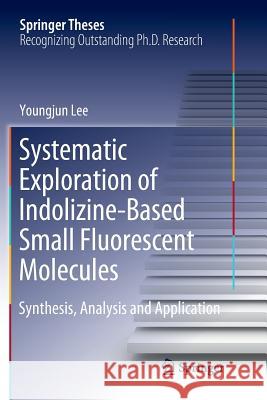Systematic Exploration of Indolizine-Based Small Fluorescent Molecules: Synthesis, Analysis and Application » książka
topmenu
Systematic Exploration of Indolizine-Based Small Fluorescent Molecules: Synthesis, Analysis and Application
ISBN-13: 9789811346606 / Angielski / Miękka / 2018 / 187 str.
Systematic Exploration of Indolizine-Based Small Fluorescent Molecules: Synthesis, Analysis and Application
ISBN-13: 9789811346606 / Angielski / Miękka / 2018 / 187 str.
cena 403,47
(netto: 384,26 VAT: 5%)
Najniższa cena z 30 dni: 385,52
(netto: 384,26 VAT: 5%)
Najniższa cena z 30 dni: 385,52
Termin realizacji zamówienia:
ok. 22 dni roboczych
Bez gwarancji dostawy przed świętami
ok. 22 dni roboczych
Bez gwarancji dostawy przed świętami
Darmowa dostawa!
Kategorie:
Kategorie BISAC:
Wydawca:
Springer
Seria wydawnicza:
Język:
Angielski
ISBN-13:
9789811346606
Rok wydania:
2018
Dostępne języki:
Numer serii:
000416125
Ilość stron:
187
Waga:
0.31 kg
Wymiary:
23.39 x 15.6 x 1.17
Oprawa:
Miękka
Dodatkowe informacje:
Wydanie ilustrowane











